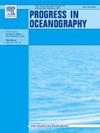Dispersal pathways of European green crab larvae into and throughout the eastern Salish Sea
Abstract
The invasive European green crab (Carcinus maenas) was first detected on the US west coast around 1989 and has expanded its range northward from central California to southern Alaska. The eastern Salish Sea was initially thought to be protected from invasion by the dominant seaward surface current in the Strait of Juan de Fuca (SJdF). However, this “oceanographic barrier” has been breached as established green crab populations have been detected in the eastern Salish Sea in recent years. Here we carried out particle-tracking simulations to understand possible natural pathways of green crab larvae invading the eastern Salish Sea. Both diel vertical migration and temperature-dependent mortality were considered in these simulations. Our results suggest that green crab larvae from the outer coast (outside the Salish Sea) and Sooke Basin (in SJdF) could be carried into the eastern Salish Sea in a narrow time window during the later cold season (esp. in March) when frequent flow reversals in SJdF occur and the seasonally rising water temperature becomes relatively favorable for green crab larvae. The major pathway for larvae to reach the eastern Salish Sea is along the southern coast of SJdF. The probability of live larvae reaching the eastern Salish Sea is highly sensitive to water temperature. Sensitivity simulations indicate that a temperature increase of 0.5–1 °C would double or quadruple the probability of successful arrival in the eastern Salish Sea. This suggests that invading green crabs might have taken advantage of the mild winter conditions in recent warm years. Our results also suggest that the warming climate in the near future may facilitate green crab larval exchange across the Salish Sea.

 求助内容:
求助内容: 应助结果提醒方式:
应助结果提醒方式:


